Building your Power Platform governance framework: From strategy to implementation
Table of contents
Key takeaways:
- True Power Platform control starts with visibility – every asset, owner, and connection map must be known.
- Smart DLP policies protect data, but innovation thrives when controls are precise, not heavy-handed.
- The biggest risks hide in the nuance – like orphaned assets, over-permissive sharing, and unvetted AI agents.
- Automation is no longer an option for businesses at scale – script-driven processes are the only way to keep governance sustainable.
- Our Syskit Point purpose-built platform enables instant, ongoing oversight minus the manual headaches of traditional admin work.
If you’ve ever run a script and discovered thousands of unknown Microsoft Power Platform flows and apps, you’re certainly not alone. Some of these flows may have mastered the art of hide-and-seek – popping up with no owner, or happily passing around data like a free-for-all. They’re often found when using the likes of the CoE Starter Kit or PowerShell – platforms that do little to solve such management challenges.
The smartest move is to build a system that avoids such problems from the start. Sustainable governance isn’t the restrictive stop sign that many fear. Think of it as an opportunity for more efficient, panic-free business processes.
This guide details a direct path for building your Power Platform governance framework – an immediate triage for coping with chaos, actionable prioritization, and automated routines that bring calm, organization, and audit-readiness.
Understanding Power Platform governance (and why you should care)
The Microsoft Power Platform tool suite is a popular choice for IT governance, offering organizations serious control over their processes.
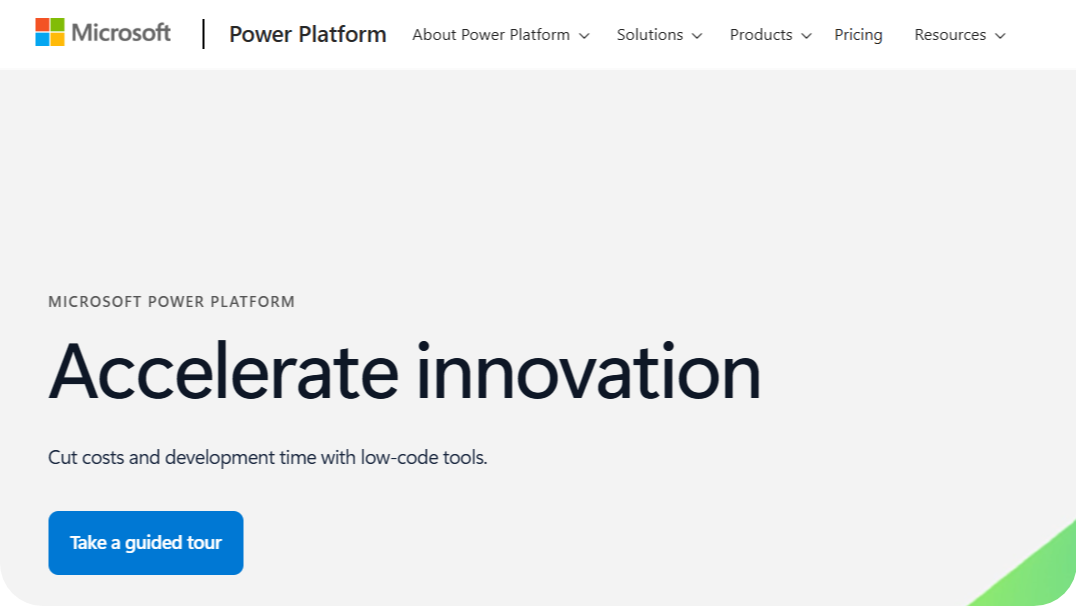
Tools like Power Apps (custom apps), Power Automate (workflows), Power BI (analytics), and Copilot Studio (conversational agents formerly known as Power Virtual Agents) form the four pillars of the Power Platform, which drive business automation and insights that can transform productivity overnight. You can find a detailed study of them in our handy governance guide.
However, this same power, left unchecked, often results in problems – rogue apps, orphaned flows, and costly surprises.
Here’s where Power Platform governance steps in. This is a set of rules and routines that direct how your organization meets these challenges. Think of it as setting enforceable ‘rules of the road’ for who can create, share, and maintain automations and dashboards.
A typical Power Platform data governance framework gives IT visibility, sets sensible policies, drives regular reviews, and automates environment management. It focuses on feedback loops and balance, making business-led innovation safe and sustainable.
For many enterprises, processes are running on a platform that IT struggles to monitor, let alone control. Every part needs oversight to maintain smooth running of daily operations. Just a single overlooked workflow or misconfigured connector can risk data leaks, compliance fines, or outright business disruption.
Here’s what high-level Power Platform governance looks like, with recommended implementations provided.
|
Area |
Description |
Implementation |
|---|---|---|
|
Security and compliance
|
Protecting your data.
|
Use DLP (Data Loss Prevention) policies, role-based access control, conditional access, and auditing.
|
|
Environment strategy
|
Organizing your workspaces.
|
Define environment types (Dev/Test/Prod), enforce naming conventions, and set rules for who can create environments.
|
|
Application Lifecycle Management (ALM)
|
Managing apps from development to deployment.
|
Implement solutions and pipelines, version control, and automated deployment practices.
|
|
Monitoring and auditing
|
Keeping an eye on everything.
|
Use the CoE Starter Kit, Power Platform Admin Center, and usage analytics for visibility.
|
|
User enablement and training
|
Empowering your citizen developers.
|
Provide training programs, governance guidelines, templates, and communities of practice.
|
Building your foundational governance framework the manual way
Step 1: Build your initial inventory
Best practice governance begins with a clear and complete inventory.
A typical start would run PowerShell cmdlets (like Get-AdminPowerApp and Get-AdminFlow) to export a raw list of every app and flow in your tenant. This produces an intimidating CSV, dense with cryptic IDs and metadata, representing a single point in time.
You’ll also need to manually parse the following fields: Owner, Last Run/Modified Date, Connectors Used, Shared With, and License Type.
Remember, this is a one-off, point-in-time export, already out of date from the moment it’s created. Any change made seconds after running is invisible until the next script.
Step 2: Structure your environments
Most issues start in the ‘Default’ environment – think shared workspace with no house rules. A typical environment setup would include:
- Default: For individual productivity and learning.
- Developer/Sandbox: For building and testing new solutions.
- Production: For business-critical applications.
When granting requests for new environments, use administrator review, document ownership clearly, and require descriptions for all new builds. This helps you connect each environment to accountable teams and business purposes.
Step 3: Implement critical DLP policies
Data Loss Prevention (DLP) policies are your organization’s seatbelt. Every connector gets classified as Business, Non-Business, or Blocked.
Start with three key policies to prevent the most common data leakage incidents:
- A restrictive default policy.
- A slightly more open productivity policy.
- A highly controlled policy for critical production.
Test these on a sample group before going tenant-wide so that business processes aren’t unintentionally disrupted.
Step 4: Hunt for critical security risks manually
Finally, armed with your CSV, the real work begins – searching for the threats Microsoft’s admin centers won’t flag.
- Dangerous connector combos: Filter for flows where public connectors (Twitter, Gmail) interact with internal systems (SharePoint, SQL) – who wants uninvited guests at their meetings?
- Orphaned assets: Cross-reference owners against HR lists to spot flows run by former staff.
- Over-privileged access: Scan for assets shared with ‘Everyone’ or ‘All Users’ and using sensitive connectors, exposing your data well beyond intended recipients.
“Manually hunting down these risks is a full-time job. If you’re taking this route, the search is essential for security, but every hour spent here is time stolen from strategic projects. The most efficient business response is to automate.”
Danijel Cizek, Product Manager Team Lead at Syskit
Scaling Power Platform governance: From manual tasks to managed processes
Manual governance methods only scale so far, and bulk changes and continuous oversight require extensive scripting and a strong process discipline. Enterprise admins often script ownership transfers, archiving, and recertification with PowerShell and API integrations, but every step demands ongoing care.
To keep up with staff changes, admins write PowerShell scripts that identify assets owned by departing employees and reassign ownership in bulk. However, each employee exit triggers a fresh cycle – export inventory, cross-check with HR, and re-run the script to prevent orphaned assets. It’s never as ‘set and forget’ as it sounds!
Then there’s automated app/flow cleanup. Here, admins craft scripts to deactivate and archive assets untouched for, say, 90 days. These must balance business continuity with risk. For example, if a major business workflow goes dormant due to a process change, should it really be deleted, or just flagged for review?
For true control, the answer lies in automated ‘attestation’ campaigns – quarterly reminders to app and flow owners to recertify the need for their assets. These policies ensure ongoing oversight but involve scheduling, reminders, escalations, and integrations. It’s a necessary job that ensures nothing is lost unintentionally, although building this out in-house is a complex and challenging task.
Establishing a Center of Excellence (CoE)
A Center of Excellence (CoE) is a dedicated team or function responsible for nurturing citizen developers, shaping organizational policy, and ensuring Power Platform adoption is both secure and effective.
Instead of policing every new app, a CoE empowers the right users, shares best practices, and continuously refines the framework to match real-world usage. It’s a highly proactive pathway that enables you to keep innovation flowing while managing risk across the organization.
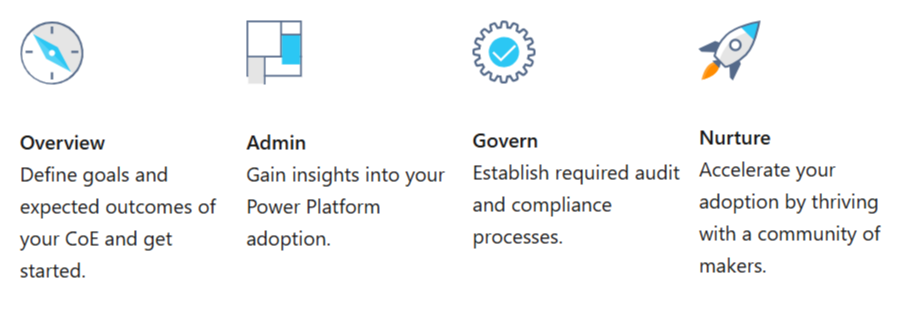
Microsoft’s CoE Starter Kit offers essential tooling – dashboards, app inventory, automated alerts, and more – to help teams launch and manage these processes at scale. However, many organizations find the initial setup and ongoing maintenance a real chore, with considerable overhead for customization and monitoring. Microsoft’s CoE kit sets a strong foundation, but comes with its own set of challenges.
Beyond the basics: Governing AI and staying compliant
Governing Microsoft Copilot Studio agents requires adding new strategies to your existing Power Platform governance framework.

The first step is keeping track of who can create, modify, or delete agents. Without this oversight, organizations quickly lose visibility as experimentation leads to dozens of ‘Hello World’ agents scattered across environments. Only your most important and trusted agents should be given the keys to control the lives of other agents!
To reduce risk, use environment separation for testing and production, enforce DLP policies to limit agent data access and prevent harmful connector combinations, and use admin tools like audit logs and Microsoft Purview to track agent lifecycle and usage. You can also manage most agents through the Power Platform admin center.

Admins also need to document agent purpose and permissions, and implement quarterly reviews for agent use and ownership. This curbs agent sprawl and ensures every agent is justified and governed.
Training admins is vital, as governance tools for Copilot Studio are evolving and require proactive adoption and understanding of best practices. But remember – the industry moves so fast that Microsoft changes things daily. Admins need to keep up with any changes that can impact their tenant security and increase costs.
Strong governance also helps organizations satisfy emerging regulations like EU DORA and updated US SEC rules that demand full oversight and documentation for all digital assets, including AI workloads.
Establishing systematic agent discovery, clear approval guidelines, and automated monitoring makes compliance and risk mitigation part of daily IT operations. Which is always preferable to a last-minute scramble!
The most important best practices for Power Platform governance
Follow our top 5 as a best practice blueprint:
- Visibility first: Complete, current inventories reveal where risk lies and help teams make informed decisions fast.
- Implement smart DLP: Create policies that protect data without preventing innovation.
- Automate: Use scripts and processes to manage the lifecycle of assets at scale. Automate as much as possible!
- Focus on real risks: Filter for orphaned assets, over-permissive sharing, or flows combining external and internal data. These patterns are where the major incidents originate.
- Empower with guardrails: Security shouldn’t come at the expense of innovation. Provide guidance and gentle guardrails for citizen developers, so their solutions stay safe, compliant, and genuinely improve the business. Guide new ideas in the right direction, but be careful never to curb them.
The Syskit Point advantage
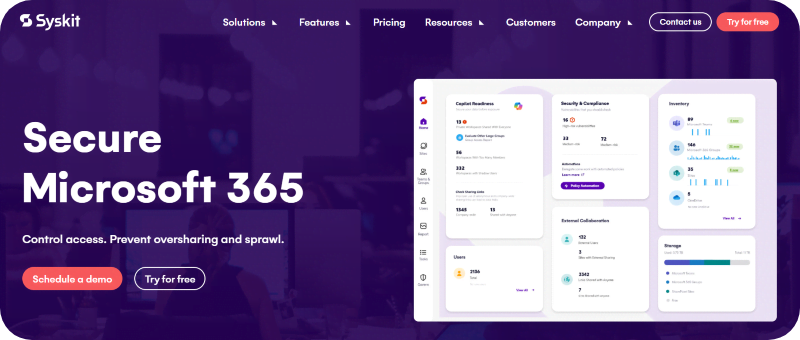
Manual governance steps – like CSV exports, cross-referencing HR data, and painstaking one-by-one reviews – are needed for a baseline but quickly overwhelm at scale.
Most IT teams know the cycle – exporting the latest inventory, hunting for security or compliance risks, never quite catching up as new assets appear and old ones become obsolete. This creates a non-virtuous loop that saps time and leaves gaps in oversight.
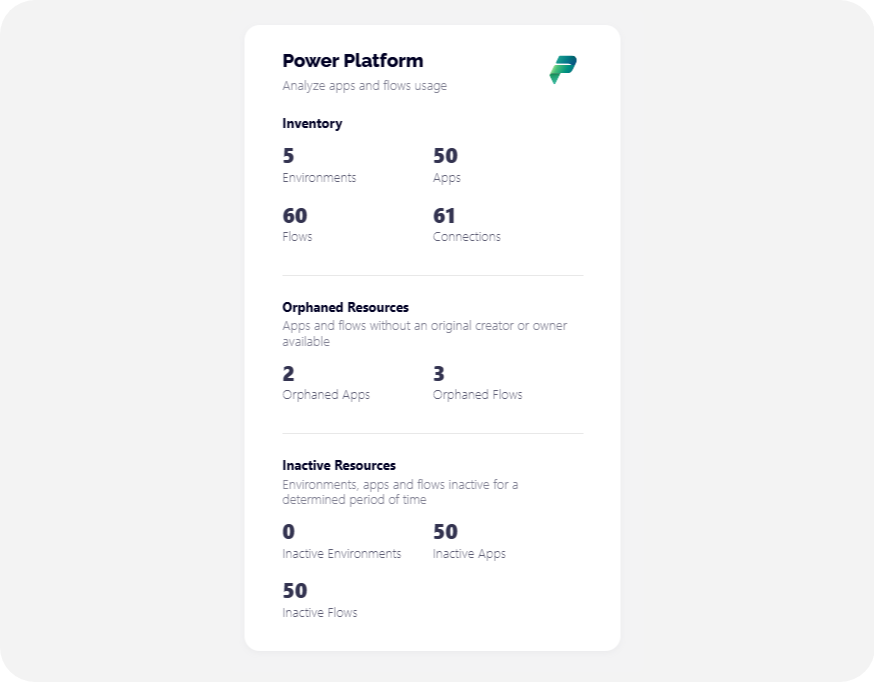
Syskit Point breaks this reactive cycle. If wrestling with out-of-date CSV files and running up against PowerShell throttling limits feels all too familiar, Syskit Point offers the relief you need across Power Platform.
First, Syskit Point automates the entire inventory and reporting process, delivering a continuously updated, centralized view of all apps, flows, and environments. Things just got easier already!

Second, the platform presents actionable insights in context. Instead of raw data dumps, Syskit Point shows, at a glance, who owns each asset, when it was last used, what it connects to, and how it’s shared. Investigation and remediation are much, much easier.

Finally, with efficient lifecycle management, IT can move from reaction to control. You can bulk select orphaned flows, then reassign or clean up in just a few clicks. Or filter across environments for inactive apps and start cleanup.
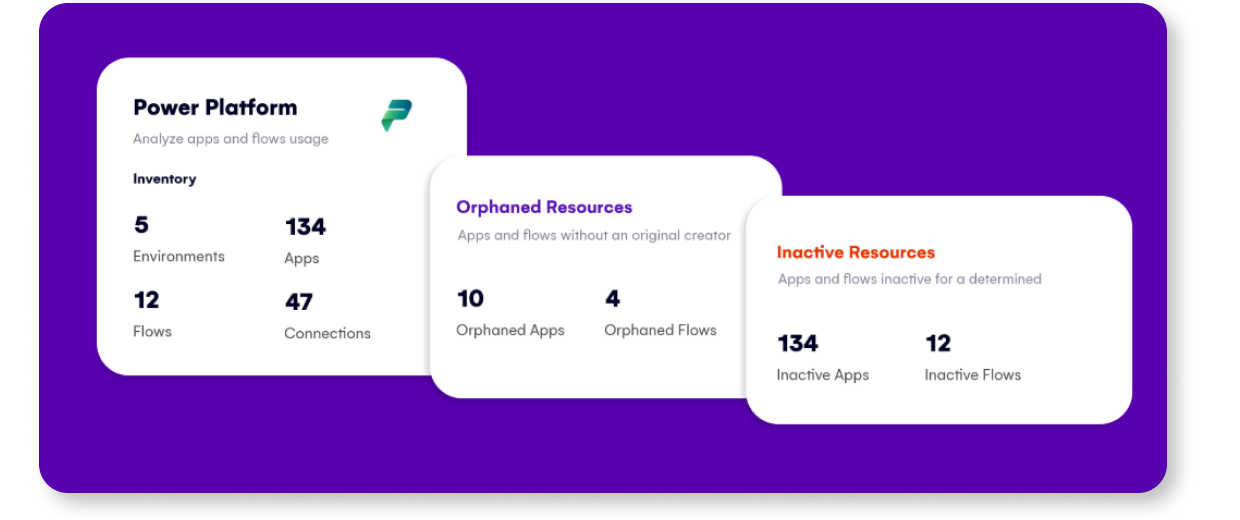
Instead of repeating manual administration, teams gain the power to act at scale, removing bad habits, securing data, and managing risk from a centralized dashboard.
The path from governed to empowered
Proactive governance turns Power Platform from a stress-inducing liability into a well-managed driver of business innovation. With the right strategy – and tools like Syskit Point in your top drawer – you’re paving the way for confident, scalable growth without sacrificing agility or creativity.
The right approach secures your data, empowers your people, and keeps you audit-ready, 24/7. Managing hundreds of apps and flows can be a pleasure when you know how.


